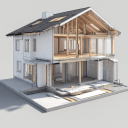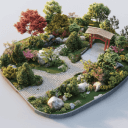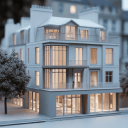In today’s fast-paced design environment, choosing the right 3D home planning tool can make or break a project. Both Arcadium 3D and HomeByMe let you create detailed interior layouts in a browser, but they prioritize different strengths.
A professional 3D designer needs a tool that is quick to use (speed), offers flexible control over design elements, and produces powerful visuals. This comparison evaluates both platforms on interface and usability, object customization, rendering workflow, compatibility, collaboration, and pricing.
We emphasize Arcadium’s true advantages, its lightning-fast browser-native performance, parametric modeling, real-time lighting, intuitive UI, AI-assisted rendering, and generous free plan, while also acknowledging HomeByMe’s strengths like high-fidelity photorealism, branded furniture catalogs, immersive visuals, and community sharing features.
Quick Guide to Choose
Feature | Arcadium 3D | HomeByMe |
Platform | Web-based (no install), runs in any modern browser; no dedicated mobile app (browser on any device) | Web-based and mobile app available (iOS/Android) |
Interface & Workflow | Intuitive gaming-style navigation; parametric editing; real-time viewport updates | 2D floorplan + 3D mode; drag-and-drop interface; multiple views (2D, 3D, avatar walk) |
Object Library | Extensive library with scalable/parametric furniture and fixtures | Huge catalog of branded furniture and decor |
Customization | Full parametric control: objects can be stretched and customized with precision | Wide choice of items; some generic models can be resized slightly; custom models via “MakeByMe” (Pro only) |
Real-Time Lighting | Yes, instant lighting and shadow updates; quick AI-styled renders (sketch, watercolor, photo) | Lighting presets (day/night); high-quality offline render engine produces HD/4K images and video |
Rendering Output | Instant viewport snapshots; AI-enhanced stylized images on demand | Photorealistic renders (HD/4K) and 360°/video through cloud processing |
Collaboration | One-click URL sharing for interactive walkthroughs; multiple editors (Pro) | Project sharing via community gallery or links; feedback from HomeByMe community |
Pricing (Free Plan) | Free forever: 2 projects, 50 objects each, full library | Free Starter: 5 projects, some HD/SD image credits, full catalog |
Pricing (Paid) | $18–$20/month: unlimited projects/objects, custom model import, 250 AI images/mo (billed annually) | Premium ~$32/mo: unlimited projects, HD/4K images, and additional packs (annual discounts available) |
Interface and Usability
Arcadium 3D:
Arcadium was built for simplicity and speed. It runs entirely in the web browser with no software installation, plugins, or GPU-heavy downloads. Its interface uses gaming-style navigation (WASD movement) and precise numeric inputs, making it easy to sketch floor plans and move in 3D.
Dynamic “parametric” objects stretch and resize automatically (for example, a cabinet or sofa can be custom-scaled in seconds). Changes update instantly on-screen, moving a sofa in first-person view immediately shows new light and space, so designers can iterate quickly.
Experienced pros praise Arcadium’s clean UI and precision: “It is wonderfully intuitive…Very functional, precise numbers, measuring units, etc. Lots of flexibility”. In short, Arcadium delivers SketchUp-level power without a steep learning curve.
HomeByMe:
HomeByMe’s interface is also browser-based and relatively user-friendly. You design in 2D floorplan mode (dragging walls and rooms), then furnish in 3D. Adding walls, doors or furniture is done with click-and-drag and can be customized in both 2D and 3D views.
HomeByMe offers extensive on-screen menus for hundreds of materials and branded products. The workflow is straightforward, and many users find it “pretty simple” once familiar. However, some operations require switching between views: for instance, walls are edited in 2D, while most furniture placement is done in 3D.
HomeByMe provides rich tooltips and an avatar walkthrough mode, but its reliance on modal menus can feel less fluid than Arcadium’s direct manipulation. According to TechRadar, HomeByMe has “vast choices” in the catalog and is “simple to use” for designing a full home, though one review notes it’s “not quite as intuitive as Floorplanner”.
Summary:
Both tools are browser-based, but Arcadium prioritizes speed and ease of use. Its streamlined UI with auto-alignment and real-time feedback lets designers fly through layout tasks without menu hunting. HomeByMe offers more menus and views, but is very capable once mastered. As a pro, I appreciate Arcadium’s immediate responsiveness there are no delays flipping between modes or loading new views.
Object Customization and Modeling
Arcadium 3D:
Arcadium shines with parametric and dynamic components. Its extensive library includes furniture, fixtures, plants, and even garden elements, all of which can be precisely scaled or shaped. For example, dragging a bookshelf will automatically adjust shelf spacing and proportions.
Designers can enter exact dimensions or use game-like controls for millimeter-level precision . Because it uses vector-based 3D models, Arcadium can stretch, mirror, or repeat parts easily handy for creating custom cabinets or tailored layouts in seconds.
The platform allows unlimited editing of colors and materials on each object, and the Library is continually expanding. Overall, Arcadium offers maximum flexibility in object customization with instant visual updates ideal for creative, iterative design.
HomeByMe:
HomeByMe boasts a vast catalog of branded products from many furniture lines. Thousands of photorealistic models (sofas, tables, decor, etc.) are available, including items from Crate&Barrel, Wayfair, Pottery Barn, and more.. This makes it easy to decorate with real-world pieces or on-trend styles.
Each object has some adjustable properties: you can change basic colors, select variants, or adjust placement. However, most models have fixed shapes and limited parametric controls. Some generic items can be stretched (e.g., resizing a couch slightly in one axis), but major edits often require swapping pieces or using the desktop 3D upload.
HomeByMe’s MakeByMe and 3DUpload features (Pro subscriptions) let you create a few custom models, but this is more advanced. In practice, HomeByMe excels at easy access to a large inventory of ready-made assets, but it offers less granular control over each object’s form than Arcadium.
Summary:
Arcadium’s parametric modeling lets you craft custom furniture and layouts on the fly; everything is editable and adaptive. HomeByMe, in contrast, provides “endless furnishing options” via branded catalogs but with more static geometry. If you need to rapidly sketch and reshape items, Arcadium gives superior control. If you prefer decorating with exact real-world brands and pre-built models, HomeByMe’s libraries lead.
Rendering Workflow and Visual Quality
Arcadium 3D:
Arcadium’s real-time renderer means immediate feedback on lighting and materials. When you adjust a ceiling light or move a lamp, shadows and highlights update instantly in the viewport. There is no lengthy “baking” process, the on-screen image always reflects the current scene.
For presentation, Arcadium offers AI-assisted rendering modes. One click can generate photorealistic images, artistic sketches, or watercolor-style visuals from any view. These AI renders produce polished interior images in seconds, thanks to cloud processing. While not true ray-tracing quality, they are impressively realistic given the instant turnaround.
As one review notes, Arcadium lets you “see accurate shadows, reflections, and materials without lengthy ‘bake’ times”. This capability encourages experimentation: I can try out different wall colors or furniture arrangements and immediately see styled outputs.
HomeByMe:
HomeByMe’s strength is high-fidelity photorealism. The built-in Photo Studio produces HD and even 4K renderings, as well as 360° panoramas and walkthrough videos. These images feature advanced effects like soft shadows, realistic textures, and lighting modes (daylight, night, golden hour).
The results are truly stunning. TechRadar called HomeByMe’s HD shots “amazing”. However, this quality comes at a cost: the renders take minutes to generate and may be limited by plan. For example, the free tier allows only a few HD images. Also, Arcadium’s instant changes are replaced by a “submit render” workflow in HomeByMe: adjust a design, then wait for the server to process an image.
On the plus side, HomeByMe has introduced a Virtual Photo Studio that can even output video flythroughs. These photo outputs are beautiful for client presentations, but for quick design iterations, they can slow you down.
Summary:
Arcadium favors speed and interactivity, live lighting previews, and fast AI-generated images. HomeByMe favors visual power and realism, its polished HD renders and videos look amazing (suitable for final presentations) but require more time.
A pro 3D designer might use Arcadium to iterate concepts rapidly and HomeByMe when needing ultra-realistic final images (budget permitting).
Device and Browser Compatibility
Both Arcadium and HomeByMe run in modern web browsers, so they work on Windows, Mac, and even Linux without needing special hardware. Arcadium’s browser-native performance is exceptionally smooth, it can handle detailed models on modest computers because its engine is lightweight.
Because Arcadium is not tethered to a particular OS, you can open it on any device (even tablets) with a browser. Arcadium does not currently have a dedicated mobile app, but its responsive design allows some touch-tablet use.
HomeByMe is similarly browser-based, and it also offers native mobile apps for iOS and Android. The app lets you view and even edit 2D floor plans on the go, which can be handy. HomeByMe’s web version requires a stable internet connection for rendering jobs, whereas basic layout design (screenshot mode) works offline.
In my experience, both platforms are very accessible you won’t need a top-end graphics card. If anything, Arcadium feels snappier on lower-end machines, since HomeByMe sometimes uses server-rendered images and a fuller UI.
Collaboration and Sharing
Arcadium 3D:
Collaboration is a built-in strength. Every Arcadium project can be shared via a simple URL link. No login is needed to view recipients can pan around in 3D or even edit if given permission.
This instant sharing removes friction: I can send a walkthrough link to a client or teammate and watch them review the design live. The platform supports multiple editors on paid plans, so a team can work concurrently. Arcadium’s viewers can also add comments or suggestions directly in the model.
Designers have praised this “best in class” client collaboration: “Clients can take a virtual walking tour and even model suggestions themselves”. The URL sharing is a unique advantage that greatly speeds up feedback cycles.
HomeByMe:
HomeByMe also offers sharing, but in a different way. You can publish your projects to the HomeByMe community or send shareable links, though some users report sharing quirks.
By default, HomeByMe encourages community engagement: there’s an “Inspiration” gallery where anyone can browse and comment on public designs. Each project has a personal page collecting layouts, renders, and furniture choices. You can also invite specific people by email to view a project. In practice, HomeByMe’s collaboration is more about publishing completed designs and getting feedback from other users.
The interface for live co-editing is not as seamless as Arcadium’s (and some reviewers note the share button had glitches). On the plus side, community sharing can spark inspiration. There are thousands of user projects to explore online.
Summary:
If quick client teamwork is important, Arcadium’s one-click URL sharing is superior. It lets anyone (even without an account) join the 3D session. HomeByMe’s strengths lie in its built-in community and feedback system, which is great for seeing others’ work and obtaining general inspiration.
Pricing and Value
Arcadium 3D:
Arcadium offers a feature-rich free plan and a single Pro tier. The Free plan ($0) includes the full furniture library, up to 2 projects, and supports a single editor per project. Each project can have up to 50 objects, which is ample for most rooms.
The Pro plan (about $18–$20/month when billed annually) lifts limits: unlimited projects, unlimited objects, 1 GB storage, the ability to import custom 3D models, multiple editors, and 250 AI render credits per month. Even the free tier is quite useful (you can design entire rooms and save realistic snapshots). Many designers note that Arcadium’s price is “affordable” and believe it offers great value.
HomeByMe:
HomeByMe uses a combination of Plans (Starter, Premium, Unlimited) and “Packs” for rendering credits. The Starter plan is free and surprisingly generous: it lets you create up to 5 projects, produce 3 high-resolution images and 9 standard images per project, and use the entire object catalog. Premium ($32/month) gives unlimited projects, HD images, plus some free 4K/360° image credits. Unlimited (about $50/month) expands image packs further.
Importantly, while designing is free, the photorealistic outputs incur costs. The HomeByMe free account still allows tons of design work, but complex projects may hit the limits on render credits. In comparison to Arcadium, HomeByMe’s paid tier is more expensive and its free plan allows more projects (5 vs 2) but fewer resolution outputs.
Summary:
Both tools offer free tiers, but Arcadium’s free plan emphasizes speed and flexibility (even on the free plan, you get real-time edits and simple exports). HomeByMe’s free plan emphasizes exploration (free HD renders up to a point). Pro users on Arcadium pay less for unlimited use, whereas HomeByMe charges a premium for unlimited high-quality visuals. In practice, Arcadium’s pricing rewards designers who value collaboration and iteration, while HomeByMe’s pricing is geared toward those who prioritize photoreal output.
Recommendation
For users who prioritize flexibility, real-time control, and rapid creative flow, Arcadium 3D is the clear winner. Its fully browser-native design means you can jump into 3D editing instantly on any device.
The parametric modeling features and instantaneous lighting feedback let you experiment without delay so you spend time designing, not wrestling with software. Arcadium’s intuitive UI and one-click sharing streamline collaboration, making it ideal for professional designers, DIYers, and teams on tight schedules. Even its free tier is powerful enough to handle whole-room layouts and instant previews, offering great value before any upgrade is needed.
HomeByMe excels if ultra-realistic visualization and branded furnishings are your top goals. Its polished 4K images and dynamic video outputs can wow clients with photoreal quality. The extensive catalog of name-brand furniture and built-in community can inspire fresh ideas, though this comes at the cost of slower renders and a higher price. In practice, many designers might use HomeByMe as a final-stage tool for high-end visuals, while relying on Arcadium for rapid prototyping and early-stage design.
In summary:
If you need to iterate quickly and maintain full control over every element, Arcadium 3D is the recommended platform. Its combination of speed, precision, and AI-enhanced outputs helps you stay creative and responsive. HomeByMe remains a solid option for detailed, realistic rendering and community engagement, but Arcadium’s streamlined workflow and collaborative ease make it the preferred choice when time and flexibility matter most.
Ready to see the difference? Try Arcadium 3D free today and experience its fast, fluid design environment firsthand.
Frequently Asked Questions
Can I use Arcadium 3D or HomeByMe without installing software?
Yes. Both Arcadium and HomeByMe run entirely in your web browser. You do not need to download or install any heavy software or plugins. HomeByMe also offers mobile apps for on-the-go planning, whereas Arcadium is optimized for desktop browsers (it works on tablets too, but no separate app).
Which platform produces more realistic images?
HomeByMe specializes in photorealism. It can generate high-definition (even 4K) renders and video walkthroughs with very realistic lighting and textures. Arcadium’s strength is speed: it gives you real-time preview and quick AI-styled renderings (photo, sketch, watercolor)
i
. These AI images look impressive but may not match HomeByMe’s full ray-traced quality. In practice, use HomeByMe for final polished visuals and Arcadium for fast iteration.
How does each tool handle furniture customization?
Arcadium uses parametric modeling, so most furniture and walls can be resized or reshaped dynamically. For example, a sofa or table can be stretched to any length with one drag. HomeByMe offers a vast catalog of real-branded furniture. Items have preset dimensions, with limited resizing (some generic items can be scaled slightly). Arcadium wins on flexibility; HomeByMe wins on inventory variety.
Can multiple people work on the same design?
Arcadium supports team collaboration. With a paid plan, multiple editors can access a project simultaneously. Even with the free plan, you can share a live view of your design via a URL, and viewers (clients or colleagues) can navigate the 3D scene instantly. HomeByMe allows project sharing by link or through its community pages, but real-time co-editing is limited. You can invite others to view or comment, but simultaneous editing tools are not as advanced as Arcadium’s URL sharing.
What are the limitations of the free plans?
Arcadium’s free tier allows up to 2 projects with up to 50 objects each. You have access to the full model library and can save snapshots. HomeByMe’s free Starter plan allows 5 projects and includes a small number of high/standard resolution image credits and the full furniture catalog. In both cases, you can design complete rooms. Arcadium limits file size and project count, while HomeByMe limits high-res export credits. For extensive projects, paid subscriptions on either platform expand these limits.
Does Arcadium 3D work on mobile devices?
Arcadium is designed for desktop browsers and does not currently have a dedicated mobile app. However, because it runs in a browser, you can access Arcadium on tablets or phones that support WebGL. The interface is primarily optimized for mouse and keyboard, so complex editing is best on a laptop or PC. HomeByMe, in contrast, has a mobile app specifically built for smartphones and tablets.
How much does it cost to upgrade?
Arcadium’s Pro plan is about $18–$20 per month (billed annually), unlocking unlimited projects/objects, custom model import, multiple editors, and monthly AI render credits. HomeByMe’s Premium plan is around $32 per month (billed monthly) or discounted annually. Premium gives unlimited projects and improved rendering quotas (HD/4K images, 360° shots). Both platforms have free versions for entry-level use.
You can check our other comparison contents:
Arcadium 3D vs RoomSketcher: Floor Plans to First-Person Tours
Arcadium 3D vs Homestyler: Browser Performance With Large Rooms
Arcadium 3D vs Floorplanner: Sharing Links and Client Walkthroughs
Arcadium 3D vs Cedreo: DIY Speed versus Professional Design Outputs
Arcadium 3D vs Sweet Home 3D: Which Design Platform Delivers Speed, Flexibility, and Visual Impact
Arcadium 3D vs SketchUp: Which Design Tool Fits Your Workflow?
Arcadium 3D vs Roomstyler: Choosing the Right Tool for Speed, Precision, and Creative Freedom
Arcadium 3D vs Planner 5D: Which Design Platform Delivers More for Modern Creators
Arcadium 3D vs SmartDraw: Floor Plans, Elevations, and Exports


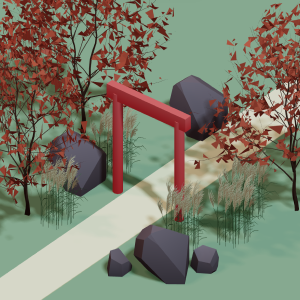 All training, tips and articles
All training, tips and articles
 3D house design tool
3D house design tool
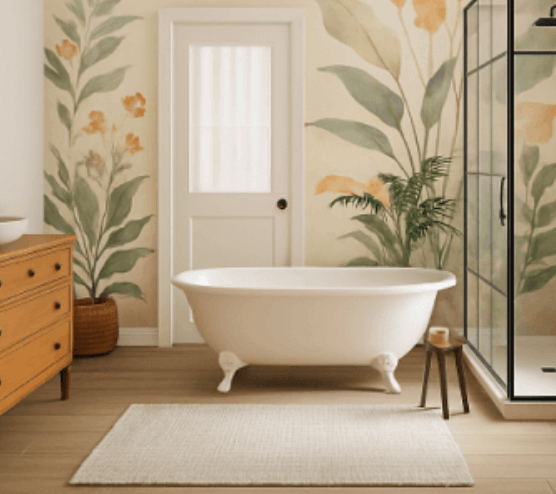
 Color palette generator
Color palette generator
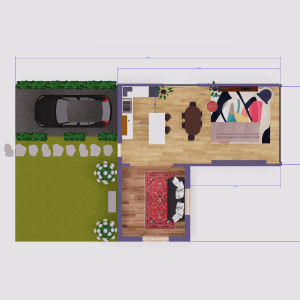 Floor plan creator
Floor plan creator
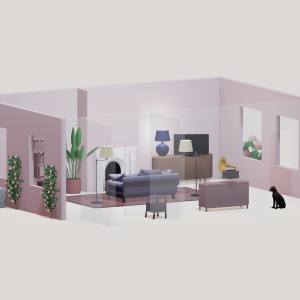 Interior design app
Interior design app
 Kitchen design tool
Kitchen design tool
 House design software
House design software
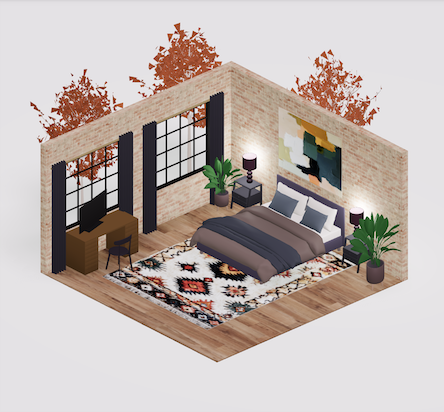 Room designer
Room designer
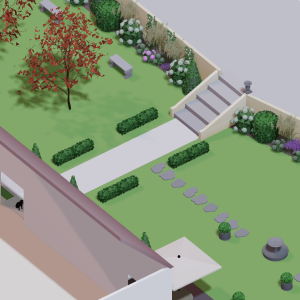 Landscape design software
Landscape design software
 Bedroom design
Bedroom design
 Office floor plan creator
Office floor plan creator


